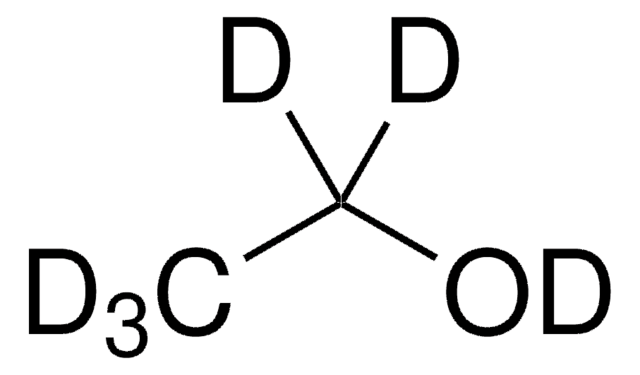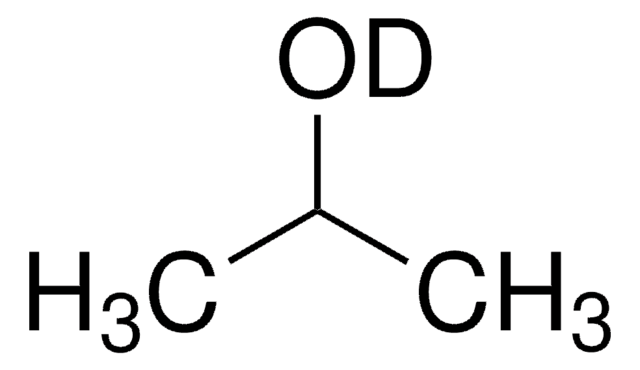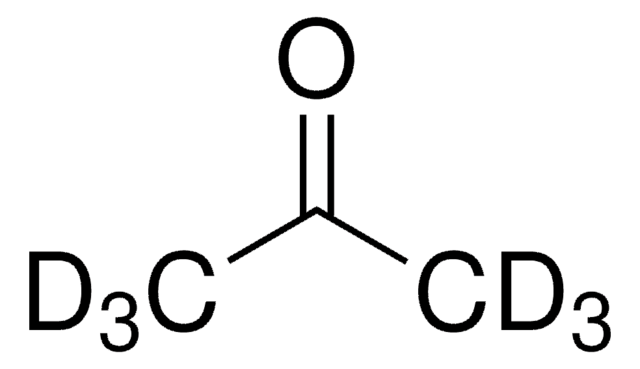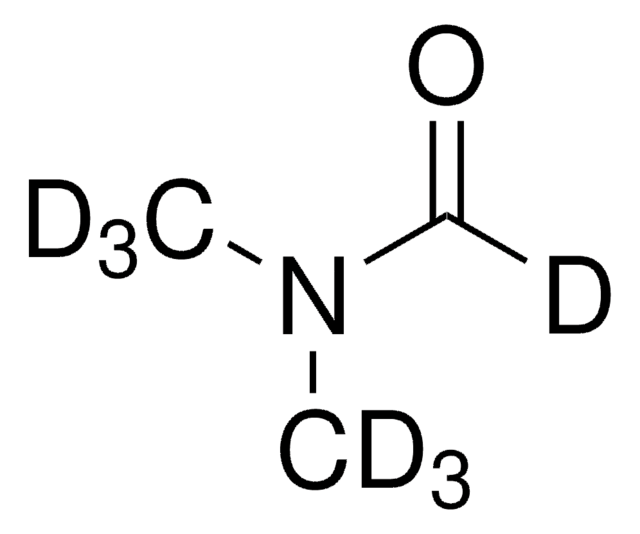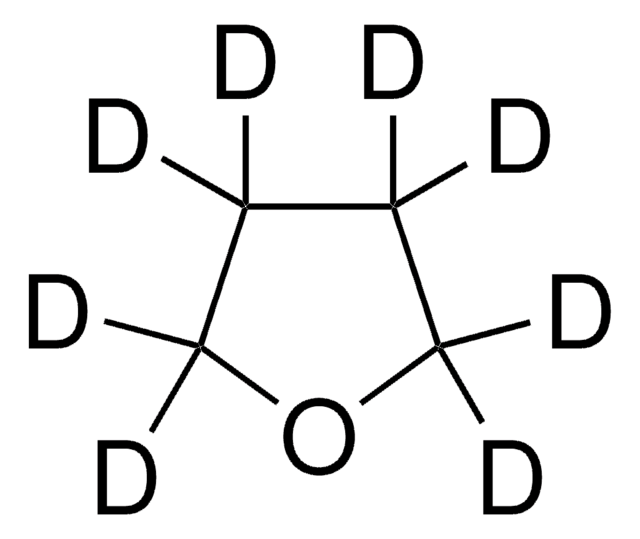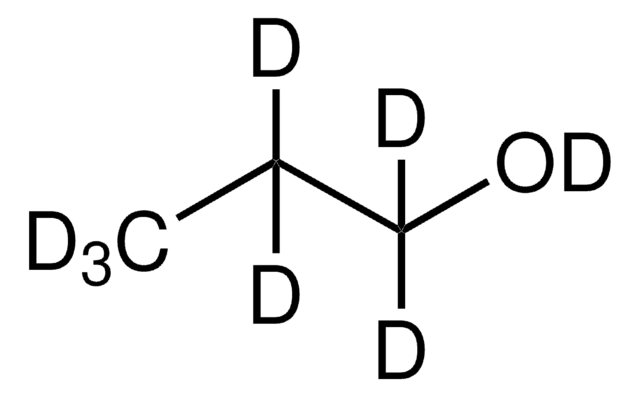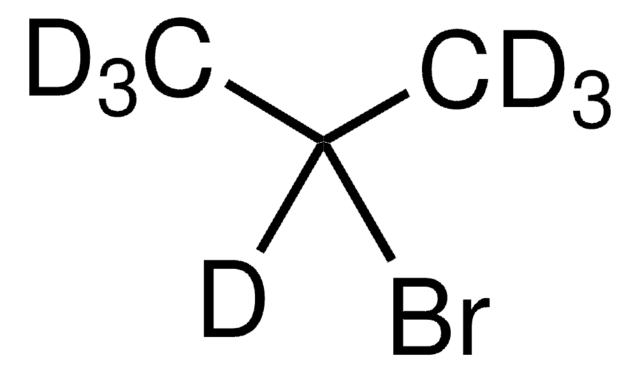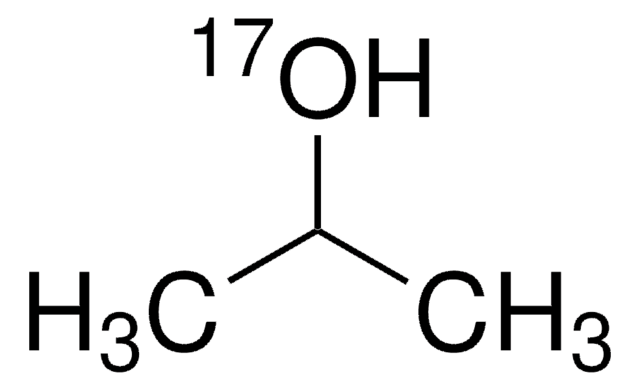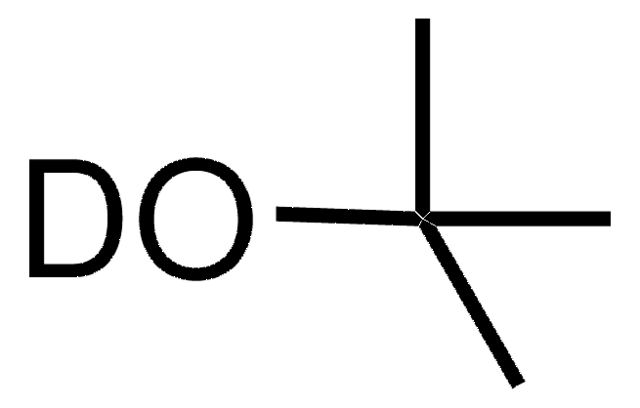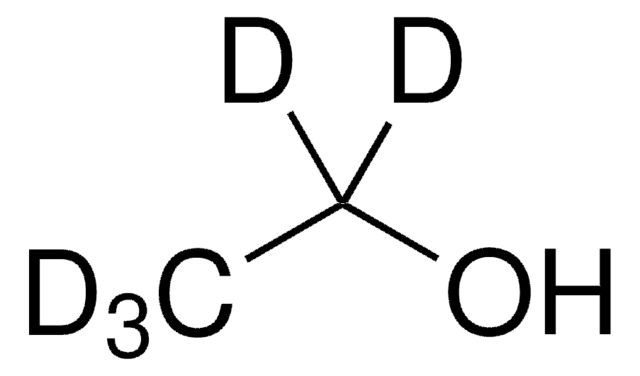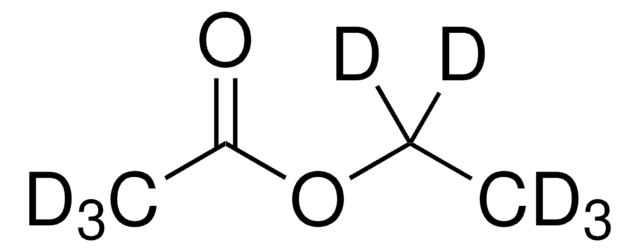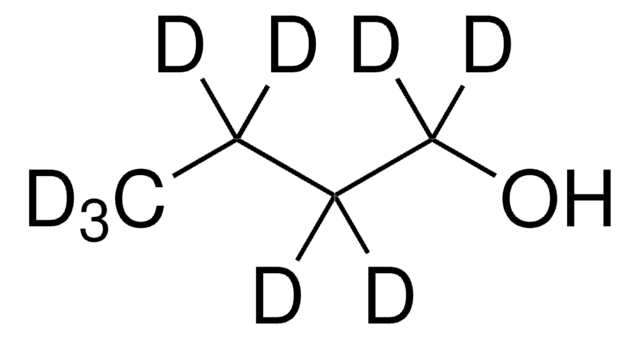175897
2-Propanol-d8
99.5 atom % D
Synonyme(s) :
Isopropanol-d8, Octadeuteroisopropanol
About This Item
Produits recommandés
Pureté isotopique
99.5 atom % D
Niveau de qualité
Pureté
99% (CP)
Forme
liquid
Limite d'explosivité
2-12.7 % (lit.)
Technique(s)
NMR: suitable
Indice de réfraction
n20/D 1.3728 (lit.)
Point d'ébullition
82 °C (lit.)
Pf
-89.5 °C (lit.)
Densité
0.890 g/mL at 25 °C (lit.)
Changement de masse
M+8
Chaîne SMILES
[2H]OC([2H])(C([2H])([2H])[2H])C([2H])([2H])[2H]
InChI
1S/C3H8O/c1-3(2)4/h3-4H,1-2H3/i1D3,2D3,3D,4D
Clé InChI
KFZMGEQAYNKOFK-PIODKIDGSA-N
Vous recherchez des produits similaires ? Visite Guide de comparaison des produits
Description générale
Application
Produits recommandés
Mention d'avertissement
Danger
Mentions de danger
Conseils de prudence
Classification des risques
Eye Irrit. 2 - Flam. Liq. 2 - STOT SE 3
Organes cibles
Central nervous system
Code de la classe de stockage
3 - Flammable liquids
Classe de danger pour l'eau (WGK)
WGK 1
Point d'éclair (°F)
53.6 °F - closed cup
Point d'éclair (°C)
12 °C - closed cup
Faites votre choix parmi les versions les plus récentes :
Déjà en possession de ce produit ?
Retrouvez la documentation relative aux produits que vous avez récemment achetés dans la Bibliothèque de documents.
Les clients ont également consulté
Articles
Use this reference table to find the coupling values and chemical shifts of our NMR (deuterated) solvents. Melting and boiling points, molecular weight, density, and CAS number are also listed.
Notre équipe de scientifiques dispose d'une expérience dans tous les secteurs de la recherche, notamment en sciences de la vie, science des matériaux, synthèse chimique, chromatographie, analyse et dans de nombreux autres domaines..
Contacter notre Service technique